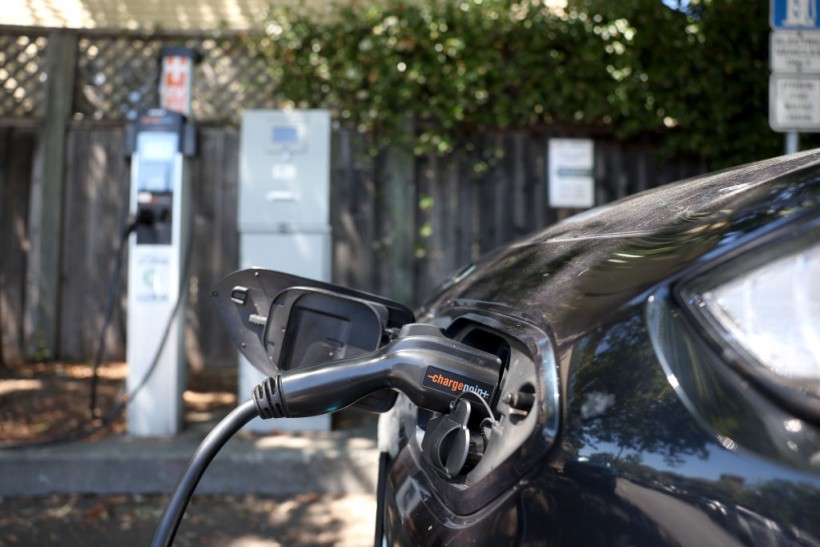Fluoride, a fundamental ingredient in toothpaste, has been identified by researchers at Argonne National Laboratory as a potential remedy for next-generation batteries.
The invention, which uses an electrolyte that contains fluoride to increase battery energy density and longevity, might usher in a new era of efficiency and sustainability for electric cars.

(Photo: Justin Sullivan/Getty Images)
A Nissan electric car sits parked at a Charge Point EV charging station on July 28, 2023, in San Anselmo, California.
Secret Ingredient
A novel fluoride electrolyte has been found by the Department of Energy's Argonne National Laboratory, and it may help enhance batteries in the future. A new generation of non-lithium-ion batteries for electric vehicles may soon be available, according to the finding made by group leader John Zhang.
In comparison to lithium-ion batteries, these non-lithium-ion batteries have an energy storage capacity that is twice as great or even higher per unit of weight or volume. This possible increase in energy density would make EVs better suited for long-distance vehicles and aircraft, thereby reducing climate change.
High-energy batteries have been known to experience fast energy loss across several charge and discharge cycles, though.
Read Also: From Sci-Fi to Reality: The Evolution of Electric Cars and What's Next
Uses for Lithium
The energy density of lithium metal batteries, which take the place of graphite in lithium-ion batteries, is more than double that of lithium-ion batteries. But in less than a hundred charge-discharge cycles, these batteries begin to swiftly deteriorate.
The electrolyte, a critical element that promotes lithium ion migration between the cathode and anode during charging and discharging operations, was the focus of Argonne Laboratory's effort to overcome this issue. Rapid energy loss results from the electrolyte, a liquid that contains salt that contains lithium, not being enough to cover the anode surface in a protective coating.
The charge and discharge of the battery depend on the solid-electrolyte-interphase (SEI) layer, which is critical for allowing lithium ions to move easily.
Components and Testing
It has been revealed that a novel fluoride solvent can sustain a barrier for hundreds of cycles. The fluoride solvent is an ionic liquid made up of two fluorinated components: a positively charged cation and a negatively charged anion. The main distinction in this electrolyte is the replacement of hydrogen atoms with fluorine, which considerably enhances performance in a test lithium metal cell.
The group studied a discovery's atomic-scale mechanism using high-performance computing tools from the Argonne Leadership Computing Facility (ALCF). Fluorine cations were collected on the surfaces of the anode and cathode prior to charge-discharge cycling, according to simulations performed on ALCF's Theta supercomputer.
Early cycling stages saw the formation of a strong SEI layer, outperforming the protective properties of earlier electrolytes.
Numerous Benefits
An economical, safe, and non-flammable electrolyte called fluorinated cation electrolyte can provide the electric car sector a considerable boost. It may be manufactured in a single step with high purity, lowering the need for solvents and contaminant release.
Zhang thinks that this electrolyte has promise that goes beyond lithium-ion batteries, offering improvements in more sophisticated battery systems.
Related Article: Fluoride Used In Toothpaste Could Be Key To Longer Battery Life










